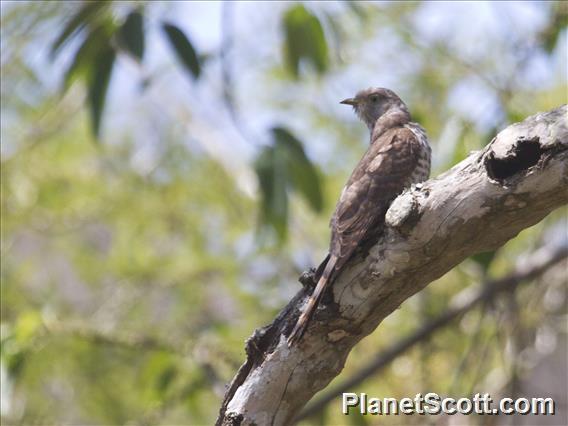Common Hawk-Cuckoo (Hierococcyx varius)

Common Hawk-Cuckoo (Hierococcyx varius)
×


Common Hawk-Cuckoo (Hierococcyx varius)
About Common Hawk-Cuckoo (Hierococcyx varius)
- Kingdom: Animals
- Phylum: Chordates
- Class: Birds
- Order: Cuckoos
- Family: Cuckoos
The common hawk-cuckoo, popularly known as the brainfever bird, is a medium-sized cuckoo resident in the Indian subcontinent. It bears a close resemblance to the shikra, even in its style of flying and landing on a perch. The resemblance to hawks gives this group the generic name of hawk-cuckoo; like many other cuckoos, these are brood parasites, laying their eggs in the nests of babblers. During their breeding season in summer males produce loud, repetitive three-note calls that are well-rendered as brain-fever, the second note being longer and higher pitched. These notes rise to a crescendo before ending abruptly and repeat after a few minutes; the calling may go on through the day, well after dusk and before dawn.
Source: Wikipedia
Visits
-
2013-02-19
Periyar Wildlife Sanctuary, India

